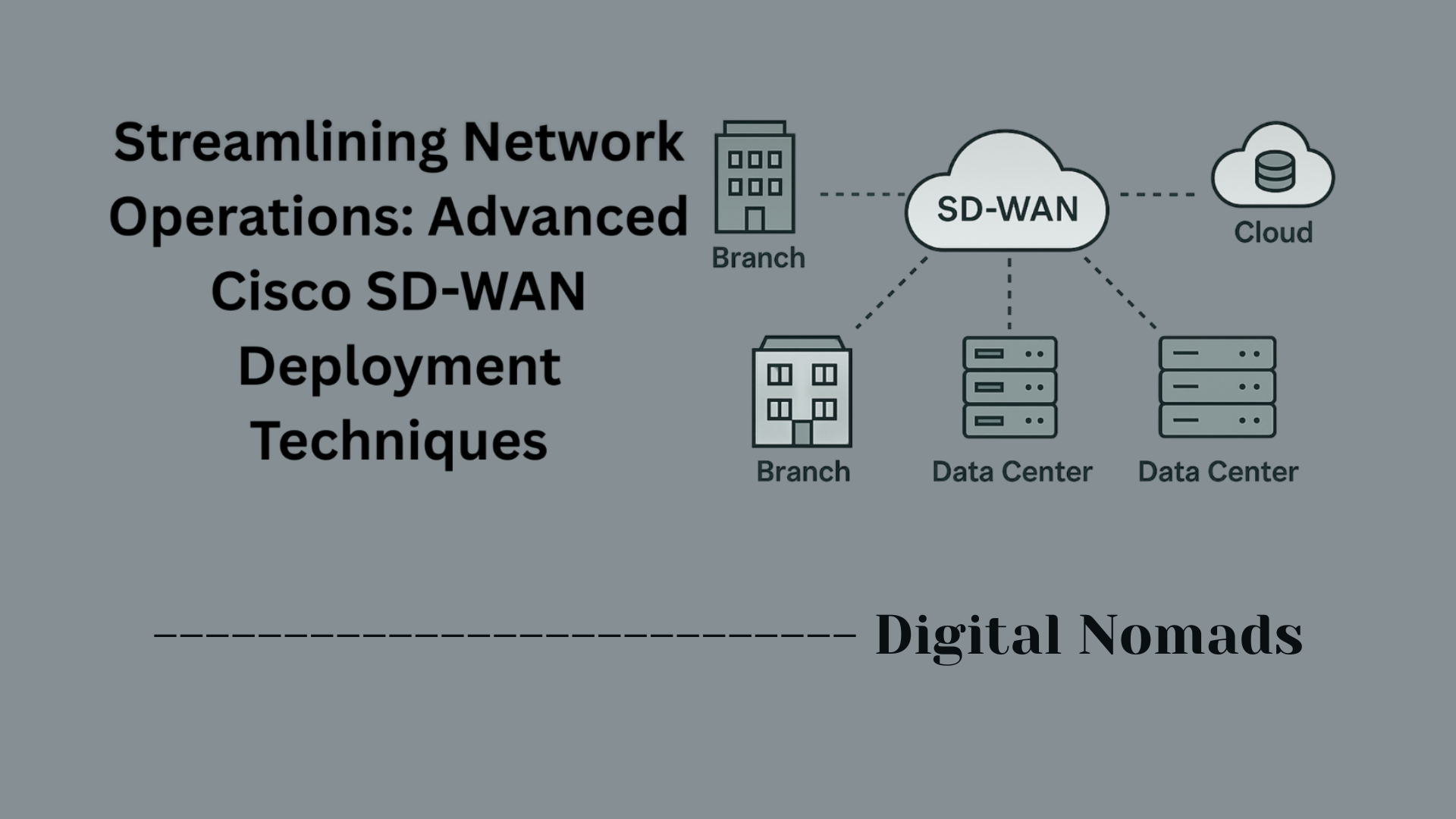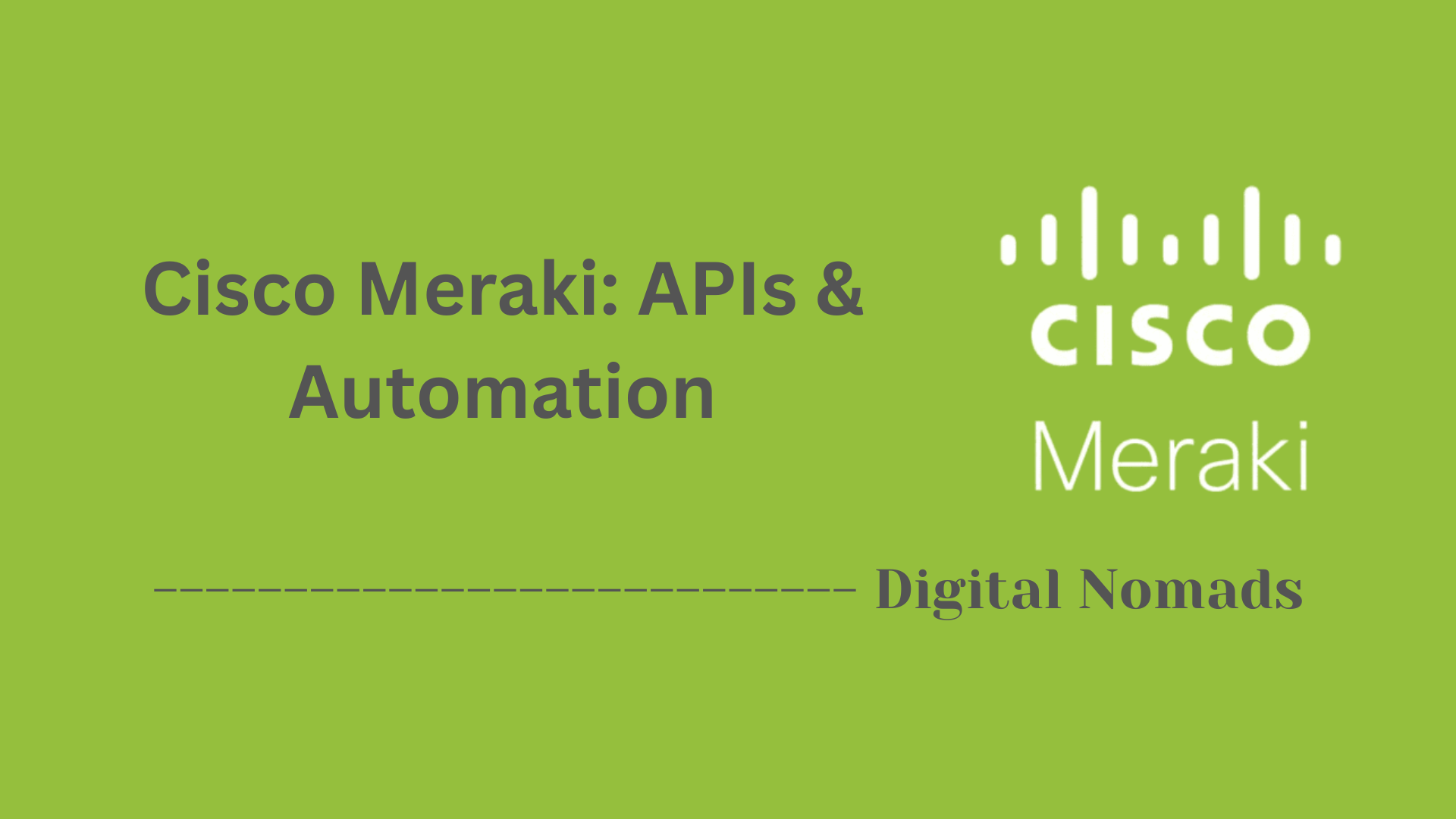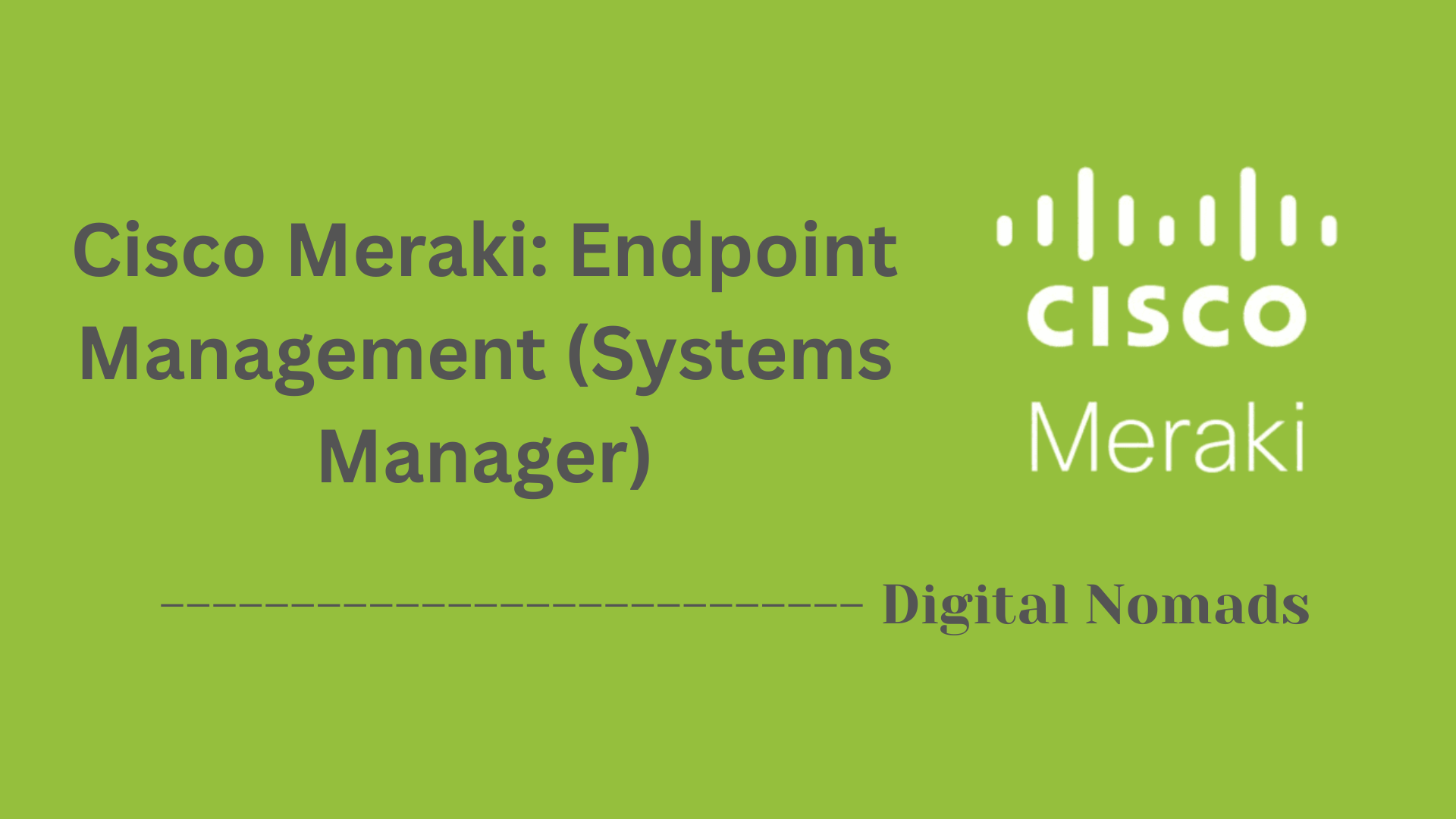Table of Contents
- Overview
- Core Components
- Prerequisites
- Configuration
- Validation
- Troubleshooting
- Conclusion
Overview
Cisco routers are specialized network devices designed to direct data efficiently across digital networks. As the backbone of IT infrastructure for businesses, service providers, and enterprises, Cisco routers manage how data packets travel between devices, networks, and the internet. Cisco, a global leader in networking technology, provides a wide range of routers recognized for their reliability, security, and performance.
What is a Cisco Router?
A Cisco router is a hardware device that connects multiple networks and governs the flow of data between them. It uses sophisticated routing protocols to analyze, forward, and manage network traffic. Cisco offers a range of router models, from compact solutions for small businesses to robust systems for large enterprises, each tailored for specific environments and requirements.
Why Should You Know About Cisco Routers?
Understanding Cisco routers is essential for several key reasons:
- Industry Standard: Cisco routers are widely used in both enterprise and service provider networks, making them fundamental to modern IT environments. Familiarity with them is crucial for network professionals and IT administrators.
- Network Reliability: These routers come with advanced reliability and redundancy features, ensuring critical applications and services remain available.
- Scalability and Efficiency: Cisco routers support dynamic routing, VPNs, traffic segmentation, and quality of service (QoS), enabling networks to scale and adapt to changing demands.
- Security: Integrating built-in firewalls, access controls, and threat prevention mechanisms, Cisco routers are at the forefront of keeping organizational networks secure.
How Cisco Routers Work
At their core, Cisco routers operate by analyzing incoming data packets, determining the most efficient path through the network, and forwarding those packets to their target destinations. This process relies on routing tables and protocols such as OSPF, EIGRP, and BGP, which help routers learn and update the best available paths dynamically.
Key processes include:
- Packet Forwarding: The router examines each packet's destination address and uses its routing table to choose the optimal path for forwarding.
- Protocol Communication: Routers use standardized protocols to exchange route information and maintain up-to-date network topology awareness.
- Traffic Management and Segmentation: Features like VLANs and QoS allow Cisco routers to prioritize important business traffic and separate sensitive data streams.
- Security Enforcement: Access control lists (ACLs), VPN support, and logging features help secure the network and monitor for unusual or unauthorized activity.
Mastering Cisco routers enables IT professionals to architect, secure, and sustain robust network infrastructures capable of supporting today’s connected world.
Core Components of Cisco Routers
These are the foundational hardware and software elements that enable Cisco routers to deliver robust performance, secure networking, and reliable data forwarding across complex environments:
- Routing Engine (CPU): Acts as the “brain” of the router, processing routing protocols, running software algorithms, and making forwarding decisions for incoming and outgoing data packets.
- Interfaces (WAN/LAN Ports): Provide physical and logical connections to other devices and networks, including Ethernet, fiber, and serial interfaces for diverse connectivity.
- Memory Components: Include RAM (for running operating system and active processes), flash memory (for storing IOS images and configuration files), and NVRAM (for startup configuration).
- Cisco IOS (Internetwork Operating System): The embedded software platform responsible for all routing, switching, and security operations. IOS delivers the command-line interface, protocol support, and feature sets.
- Power Supply Units: Ensure continuous device operation, often featuring redundant or hot-swappable options for critical environments.
- Cooling System: Built-in fans or advanced thermal controls help regulate temperature, maintaining hardware reliability under varying loads.
- Expansion Slots/Modules: Allow for adding new hardware components such as additional interfaces, VPN modules, or security features to customize or scale capabilities.
Prerequisites for Cisco Routers
Before configuring or deploying a Cisco router in any environment, several fundamental prerequisites need to be addressed to ensure a smooth and secure setup process:
-
Site and Power Requirements:
- Ensure the installation site has proper ventilation and meets power requirements (typically supports autosensing 110V/220V AC).
- Verify there are no major sources of electromagnetic interference nearby.
- Use an uninterruptible power supply (UPS) or power conditioner if necessary.
-
Physical Tools and Equipment:
- Anti-static ESD wrist strap and cord to prevent component damage.
- Phillips and flat-blade screwdrivers.
- Ethernet cables and (if needed) serial/WAN cables suitable for your network connections.
- Rack-mounting hardware (if installing in a rack).
- PC, laptop, or terminal with a serial console port for initial configuration.
-
Network and Addressing Information:
- List of network segments and IP addressing plan, including assigned subnets for interfaces.
- Default gateway and subnet mask information.
- Routing protocol to be used (e.g., Static, OSPF, EIGRP, BGP).
-
Firmware and Licensing:
- Cisco IOS image appropriate for your router model—verify compatibility and version requirements.
- Any feature licenses necessary for advanced services (VPN, security, voice, etc.).
-
Access and Authentication:
- Decide on initial configuration access—console, SSH, or Telnet.
- Prepare usernames and passwords for device login and enable modes.
- Establish access lists or firewall rules for secure device management.
-
Environmental and Safety Considerations:
- Adhere to proper grounding standards to prevent electrical hazards.
- Check for sufficient space to access both the front and rear panels for maintenance.
- Ensure only qualified personnel handle the installation and servicing.
Completing these prerequisites will help ensure your Cisco router installation is efficient, reliable, and secure for your intended network environment.
Configuration of Cisco Routers
Proper configuration is essential to ensure your Cisco router functions securely and reliably. Follow this step-by-step guide for the initial configuration process using the Command-Line Interface (CLI):
-
Access the Router CLI:
- Connect to the router via console cable and open a terminal emulator (e.g., PuTTY).
- Press Enter to begin and access User EXEC mode (
Router>). - Type
enableto enter Privileged EXEC mode (Router#).
-
Enter Global Configuration Mode:
- Type
configure terminalorconf tto enter global configuration mode (Router(config)#).
- Type
-
Set a Unique Hostname:
hostname [YourRouterName]
-
Secure Access with Passwords:
- Console Access:
line console 0, thenpassword [your_password], thenloginandexit. - Enable Secret:
enable secret [your_secret_password] - VTY (remote telnet/SSH):
line vty 0 4, thenpassword [your_vty_password], thenloginandexit.
- Console Access:
-
Configure Interface IP Addresses:
- Type
interface [type][number](e.g.,interface GigabitEthernet0/0). - Assign an IP address:
ip address [IP_address] [subnet_mask] - Enable the interface:
no shutdown - Repeat for each required interface.
- Type
-
Configure Routing:
- For static routing:
ip route [destination_network] [mask] [next_hop] - For dynamic routing: enter routing protocol configuration, e.g.,
router ospf 1, thennetwork [network] [wildcard_mask] area [area_id].
- For static routing:
-
Create and Apply Access Control Lists (ACLs):
- Define traffic rules using
access-listorip access-listcommands. - Apply to interfaces with
ip access-group [number/name] in/out.
- Define traffic rules using
-
Configure Additional Services (Optional):
- Set up DHCP:
ip dhcp pool [name],network [network] [mask],default-router [gateway],dns-server [dns]. - Enable NAT: Create access-list, then
ip nat inside source list [ACL] interface [interface] overload. - Enable SNMP, NTP, and logging as required for network management.
- Set up DHCP:
-
Save the Configuration:
- Copy the running configuration to startup:
copy running-config startup-config
- Copy the running configuration to startup:
-
Verify and Test:
- Use
show run,show ip interface brief, andshow versionto confirm configuration. - Test network connectivity (e.g.,
pingandtraceroute).
- Use
Following these steps will result in a secure, operational Cisco router ready for integration into your network environment.
Validation of Cisco Router Configuration
Validating your Cisco router configuration ensures that the device operates as expected, the network is secure, and all services are functioning correctly. Follow these systematic steps to validate and test your Cisco router setup:
-
Verify Running Configuration:
- Use the
show running-configcommand to review the active configuration and confirm that your changes have been applied.
- Use the
-
Check Interface Status:
- Execute
show ip interface briefto get a summarized view of interface statuses and IP assignments. - For detailed interface diagnostics, use
show interfaces [interface-name](e.g.,show interfaces GigabitEthernet0/0).
- Execute
-
Validate Routing Table:
- Run
show ip routeto verify routing entries and ensure routes are correctly learned or configured. - Check specific protocol neighbors with commands like
show ip ospf neighbor,show ip eigrp neighbors, orshow ip bgp summary.
- Run
-
Test Network Connectivity:
- Ping important hosts or next-hop addresses using
ping [IP_address]to verify reachability. - Use
traceroute [IP_address]to track packet path and identify any routing issues along the path.
- Ping important hosts or next-hop addresses using
-
Review Logs and System Messages:
- Check system logs with
show loggingfor any warnings or errors related to interfaces, protocols, or hardware.
- Check system logs with
-
Validate Security Settings:
- Confirm the correct application of Access Control Lists (ACLs) with
show access-lists. - Verify that SSH/Telnet access controls and authentication settings are as intended.
- Confirm the correct application of Access Control Lists (ACLs) with
-
Use Configuration Validation Tools (if available):
- Leverage Cisco or third-party config validation tools to automatically check syntax and policy compliance before committing changes.
-
Save and Confirm Startup Configuration:
- Use
copy running-config startup-configto save your validated configuration. - Verify saved configuration with
show startup-config.
- Use
-
Perform Final Testing:
- Perform end-to-end tests such as service-specific pings, connectivity tests, or application validations to confirm operational status.
Following these steps will thoroughly validate your Cisco router’s configuration and ensure it is ready for production deployment.
Troubleshooting Cisco Routers
When issues arise on a Cisco router, it's essential to follow a systematic, step-by-step troubleshooting approach to quickly identify and resolve problems. Here is a practical method and key checks to guide you:
-
Define the Problem:
- Identify specific symptoms—what is not working? Is it connectivity, slow performance, or hardware errors?
- Gather information from logs, error codes, or reports from users experiencing issues.
-
Gather Detailed Information:
- Use
show running-configandshow startup-configto check the current and saved configurations. - Use
show ip interface brieffor a summary of all interface statuses and assigned IP addresses. - Check interface details and status with
show interfaces [interface]and look for errors, drops, or flapping.
- Use
-
Check Physical and Layer 1 Issues:
- Ensure cables are connected and undamaged.
- Verify the power supply and indicators on the router (LEDs, fans operating).
- If appropriate, reset interfaces with
shutdownandno shutdown.
-
Validate Layer 2/3 Configurations:
- Ensure correct VLAN, trunk, and interface assignments.
- Check routing protocols with
show ip route,show ip protocols,show ip ospf neighbor, orshow ip bgp summaryas applicable.
-
Test Connectivity and Path:
- Use
ping [destination]for basic reachability. - Use
traceroute [destination]to identify where packets are being dropped or delayed along the route.
- Use
-
Review System Logs and Errors:
- Access logs with
show loggingand system messages for details on failures or warnings. - Look for recurring system errors or frequent interface transitions ("carrier transitions").
- Access logs with
-
Check Resource Utilization:
- Monitor CPU (
show cpu) and memory (show memory) usage for abnormal spikes which can indicate underlying issues.
- Monitor CPU (
-
Validate Security Configurations:
- Review access control lists (ACLs) with
show access-listsfor rules that may be blocking intended traffic. - Check authentication and authorization settings that might prevent access.
- Review access control lists (ACLs) with
-
Resolve and Test:
- Apply configuration fixes or hardware replacements.
- Test thoroughly after changes using the same tools (ping, traceroute, show commands).
- Use
clear countersand repeat checks to ensure issue is resolved.
-
Document Changes and Solutions:
- Record what was done, what fixed the issue, and save the corrected configurations (
copy running-config startup-config).
- Record what was done, what fixed the issue, and save the corrected configurations (
Following these troubleshooting steps and employing the recommended commands will help you diagnose and quickly resolve most common Cisco router issues—whether related to connectivity, configuration, hardware, or security.
Conclusion
In this deep dive into Cisco Routers, we explored the foundational elements that make these powerful devices an essential part of modern network infrastructure. Whether you're an aspiring network engineer, IT administrator, or a seasoned professional, understanding Cisco routers equips you with the knowledge to confidently deploy, manage, and troubleshoot both simple and complex network environments.
Key Takeaways:
- Overview: Cisco routers serve as the traffic directors of the internet and enterprise networks, ensuring data packets take the most efficient paths.
- Core Components: From the routing engine to interface modules, Cisco routers are built with modular and scalable hardware and software to adapt to nearly any environment.
- Prerequisites: A successful deployment requires careful planning, including the right equipment, IP addressing, security credentials, and environment setup.
- Configuration: Using the Cisco CLI, administrators can set up routing protocols, secure access, configure interfaces, and enable advanced services like DHCP and NAT.
- Validation: It’s essential to validate your configurations using diagnostic commands such as
show,ping, andtracerouteto ensure proper functionality. - Troubleshooting: A structured, step-by-step process—starting with identifying symptoms to checking configurations and hardware status—helps you resolve issues quickly and effectively.
Cisco routers are more than just hardware—they are the foundation for secure, scalable, and high-performance networks. By mastering their components, features, and configuration workflows, you can build resilient infrastructures that meet today’s network demands.
Thanks for following along on this deep dive! Whether you're getting started or enhancing your skills, keep exploring and experimenting—because in the world of networking, there’s always more to learn. Happy routing! 🚀🔌




